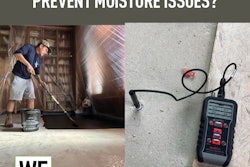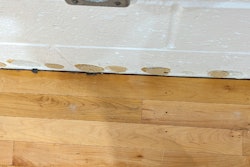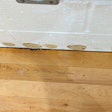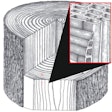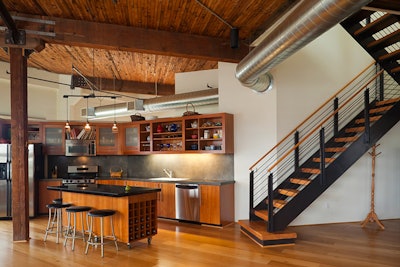
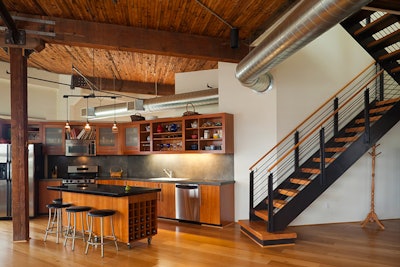 Because you want the natural beauty of your hardwood floor to last, it is vitally important that you pay attention to moisture.
Because you want the natural beauty of your hardwood floor to last, it is vitally important that you pay attention to moisture.
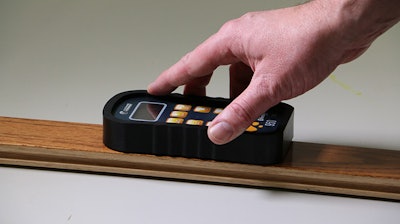 Using a pinless wood moisture meter will give fast moisture readings and won't mar your wood with unsightly pinholes.
Using a pinless wood moisture meter will give fast moisture readings and won't mar your wood with unsightly pinholes.
 If installing a wood floor over concrete, make sure you also evaluate the moisture condition of the slab by conducting an in situ relative humidity test.
If installing a wood floor over concrete, make sure you also evaluate the moisture condition of the slab by conducting an in situ relative humidity test.
The following content was provided by one of our advertising partners. To learn more about sponsored content, click here.
"Hygroscopic"—it's probably not a word that comes to mind while prepping for a wood floor installation. But it is wood's one characteristic that you can't afford to ignore. That is, if you want your hardwood floor to maintain its natural beauty and functionality for the long haul.
In a nutshell, being hygroscopic means wood readily absorbs or releases moisture depending on the surrounding conditions. In a cold, damp room, you can expect the wood to soak up added moisture. Conversely, if the interior environment is warm and dry, the wood will tend to get drier in response to the surroundings.
If you install wood with a moisture content (MC) significantly different than your room's ambient conditions, you can be sure that the hygroscopic nature of the wood will kick in—either absorbing or releasing moisture. That means you may later find yourself facing a serious moisture-related flooring problem, such as buckling, crowning, warping, cracking, splitting, mold or mildew.
Fortunately, proper precautions can nearly always prevent these issues. Your first line of defense is to allow time for the wood flooring to acclimate to the interior environment. Taking MC measurements (expressed as a simple percentage based on the weight of the water relative to the dry weight of the wood) gives you the information you need about your wood's readiness for installation.
Your goal should be for the wood to be close to a target MC where the wood is neither absorbing nor releasing moisture. This target, known as the equilibrium moisture content, or EMC, is based on ambient temperature and relative humidity. Typically, EMC will be in the range of 6–9%, although this will vary by geographic region.
Using a handheld moisture meter makes it extremely easy to get accurate moisture measurements. You can use one of two types of meters: pin or pinless. For wood flooring, a non-damaging pinless meter, such as the Orion 950, is ideal. It will give fast readings and won't mar your wood with unsightly pinholes.
One other essential consideration for a successful wood floor installation: If the subfloor is concrete, be sure to evaluate its moisture condition using an in situ relative humidity test kit, such as the Rapid RH L6. Otherwise, you may be at risk for a moisture-related flooring failure.
For more information about measuring moisture prior to installing a wood floor, visit WagnerMeters.com.















